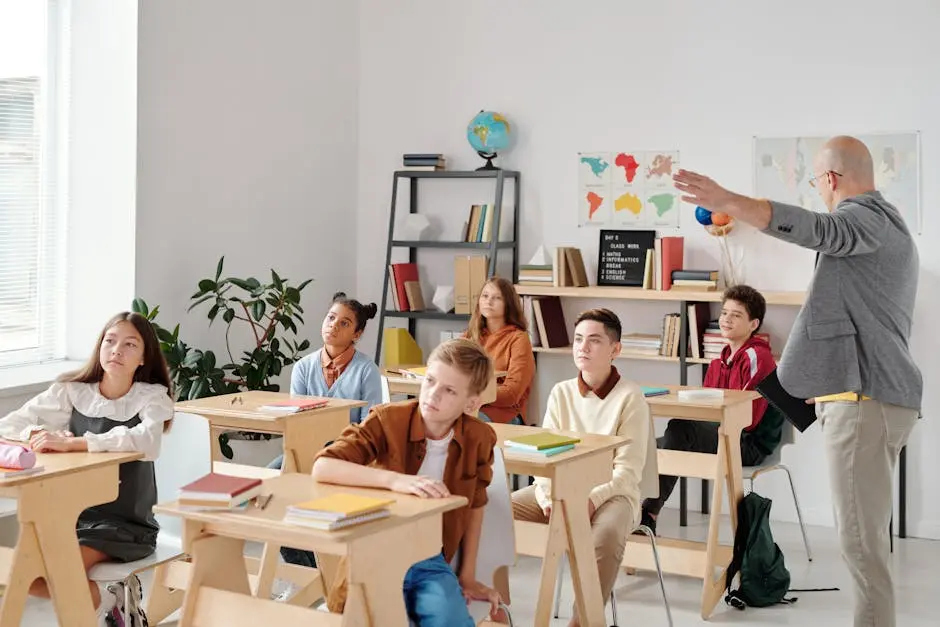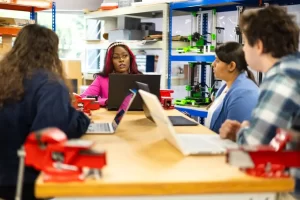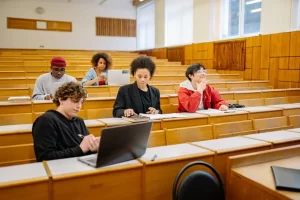Classroom management is essential for creating a productive learning environment. With the right strategies, teachers can foster a positive atmosphere that encourages growth and engagement. In this blog post, we will explore some effective methods that can help teachers enhance their classroom management skills.
Understanding the Importance of Classroom Management
Classroom management sets the stage for an effective learning experience. Classroom management is the act of creating a classroom environment where students are secure, respected, and involved. Understanding its importance, teachers can already begin to apply strategies that encourage positive behavior and academic success.
That said, classroom management is not just about discipline. It’s about establishing a culture of learning and respect. For instance, when students know their feelings and thoughts are respected, they will more likely participate actively in class discussions. That kind of rapport builds a setting where learning is not just a requirement but a shared goal.
One way of developing a deep understanding of how to set your classroom up is to understand the home environment of your students. It’s important not to be condemning. Understanding their home environment informs you about the natural learning environment of the students. Try having your student write a paragraph about a day in their life for extra credit or a warm-up.
In addition, effective classroom management can reduce stress for both the teachers and the students. A well-managed classroom has less conflict and fewer distractions, and the teachers can focus on teaching and interacting with the students. When the environment is conducive to learning, everyone benefits.
Setting Clear Expectations and Rules
Communicating clear expectations and rules helps students understand what is required of them. When teachers set guidelines, they provide a framework within which students can operate, leading to fewer misunderstandings and distractions.
Moreover, involving students in the process of establishing these rules can be incredibly effective. By soliciting their input, teachers not only allow students to feel a sense of ownership but also encourage them to take responsibility for their behavior. This collaborative approach creates an environment where students are more likely to adhere to the established norms.
In addition, reinforcing these expectations consistently is crucial. Regularly reminding students of the rules and the reasons behind them nurtures a culture of accountability. When students see their teachers following the rules as well, it sets a powerful example.
Building Positive Relationships with Students
Establishing positive relationships with students can significantly influence classroom management. When students are respected and bonded to their teacher, they tend to act positively and reduce disruptive behavior.
One of the best methods to establish these connections is through positive communication. Investing time to see how students are doing, whether through basic door-greets or in-depth conversations, shows that their educator truly cares. This process works wonders in making the classroom environment more humane.
In addition, understanding students’ interest and history helps teachers modify lessons that mean something to them. As long as students can relate to themselves in the curriculum, they tend to participate more. It establishes a comfort zone where everyone feels free expressing their opinions and ideas.
Incorporating Engaging Activities and Lessons
One of the most effective ways to maintain classroom management is to keep students engaged. Incorporating interactive and relevant activities helps capture their attention and minimizes the chances of misbehavior.
Consider using project-based learning as a strategy. By allowing students to work on real-world problems collaboratively, teachers can harness their enthusiasm while teaching critical thinking and teamwork skills. This not only increases engagement but also builds a sense of community, where everyone contributes to a common goal.
Furthermore, varying instructional methods can make a significant impact. Incorporating multimedia presentations, group discussions, or hands-on activities caters to different learning styles and keeps the content fresh. When lessons are dynamic, students are less likely to lose interest and more inclined to participate actively.
Need help with thinking of varied fun and engaging activities in your lesson plans? Try out the LYS app!
Developing a Responsive Approach to Behavior
A responsive approach to behavior involves recognizing and addressing issues as they arise. By being observant and flexible, teachers can tailor their responses to meet individual students’ needs, fostering a supportive learning environment.
For instance, if a student is having an off day and struggles to concentrate, a teacher’s understanding response, such as offering a break or a quiet space, can make all the difference. This practice emphasizes empathy and acknowledges that learning is a journey, often filled with ups and downs.
Moreover, having a proactive behavior management plan helps outline what steps to take when challenges arise. When teachers are prepared, they can respond quickly and effectively, ensuring that disruptions do not overshadow the learning experience.
Utilizing Classroom Routines and Procedures
Establishing routines and procedures helps create predictability in the classroom. When students understand what to expect, they feel more secure and are better able to concentrate on their learning.
Moreover, teaching routines explicitly can greatly benefit students, especially those who thrive on structure. For example, outlining daily schedules and transition plans during the first week of school allows students to adapt more quickly. This awareness helps minimize anxiety and fosters a more relaxed classroom atmosphere.
It’s also important to revisit and reinforce these procedures regularly. Consistent reminders help cultivate habits that become second nature to students over time. A well-established routine means smoother transitions and less opportunity for distractions, setting everyone up for success.
Reflecting on and Adapting Management Strategies
Regular reflection and adaptation of management strategies are crucial for continuous improvement. Teachers should assess what works and what doesn’t, seeking feedback and making necessary adjustments to enhance their classroom management techniques.
Engaging in professional development opportunities is a great way to gather new insights. Workshops and peer observations can provide fresh perspectives on classroom management. Additionally, collaborating with colleagues to share experiences and strategies creates a supportive community of practice that benefits everyone.
Ultimately, nurturing a growth mindset towards classroom management allows teachers to evolve alongside their students. Embracing change and being willing to try new approaches not only enriches the classroom experience but also inspires students to be adaptable and resilient learners.
Wrapping Up: The Path to Effective Classroom Management
Improving classroom management is an ongoing journey that requires patience, flexibility, and a willingness to adapt. By implementing these strategies, teachers can create a more conducive learning environment that benefits both themselves and their students. Remember, effective classroom management not only enhances the educational experience but also helps build stronger relationships within the classroom.








